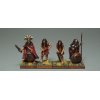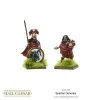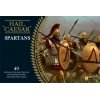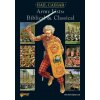Spartans
While most other states were happy to have their citizens turn up for battle fully equipped and able to march forward in a line the Spartan state took a far more regimented view of life generally. Training began at a young age and discipline was harsh, enabling the Spartans to field the most powerful land army on mainland Greece. The Spartans had the only standing army of the period and this was regimented and drilled to a degree not seen elsewhere. The other advantage was a defined command structure. Most Greek states would have a committee of amateur generals vying for honour and prestige while Spartan generals were subordinate to the commander in chief and used to carrying out orders without questioning them first.
The Spartan regiments (called Lochos or Meros) were recruited only from free Spartan citizens (the Spartiates) and were 600 to 700 strong. The number of Meros would vary as to the number of Spartiates available for service but a number between 4 and 7 seems common (less as time went on). These Hoplites were drilled to march and countermarch so were far more manoeuvrable on the battlefield than other states. Their reputation was well founded as a Spartan Meros was not beaten in battle until 425BC on the island of Pylos when they were besieged on broken ground and worn down by Athenian light troops.


























